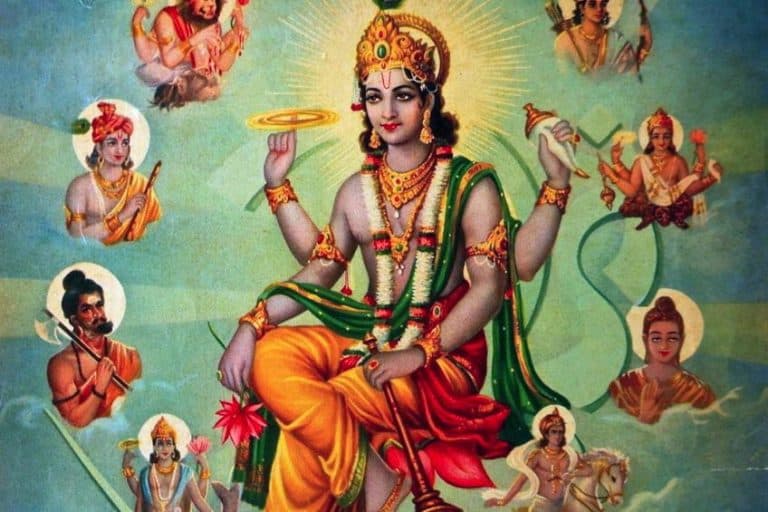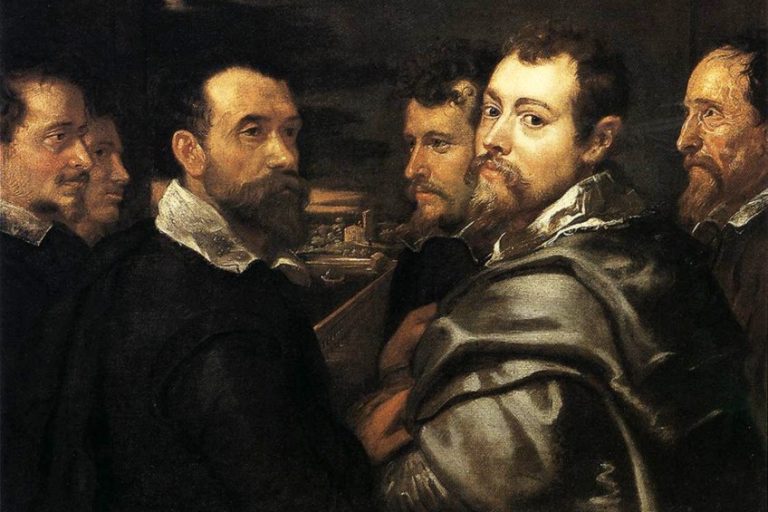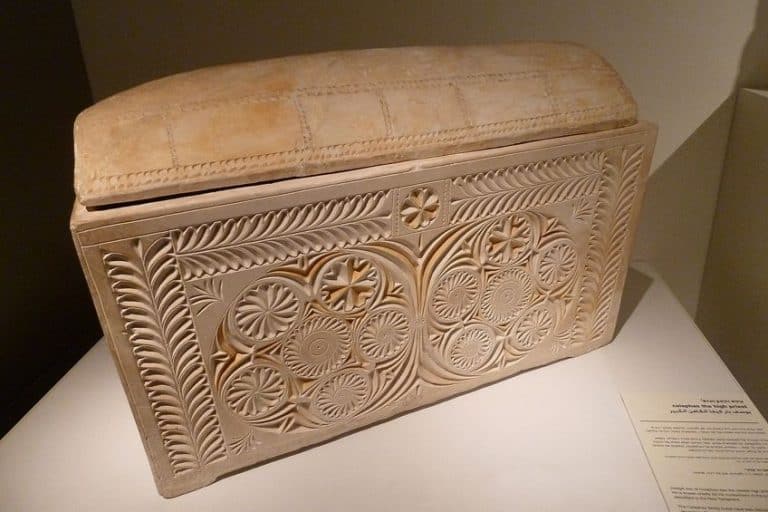Postmodern Art – An In-Depth Exploration of the Postmodernism Period
Postmodern art was an artistic movement that replaced Modernism and helped pave the way for the development of Contemporary art. The Postmodern period came up around the middle of the 20th century, and lasted for a few years until it advanced into the later movements that would supersede it in popularity. Existing as a controversial artistic practice, Postmodernism art destroyed previously established ideas about art and design, as the movement created a new and avant-garde self-awareness surrounding style.
An Introduction to Postmodern Art
Forming in the middle of the 20th century, Postmodern art was said to burst onto the artistic scene sometime between the 1960s and 1970s. This movement replaced Modernism as the primary artistic style at the time, and was viewed as a form of art with no standard guidelines that dictated the practice. Postmodern art stretched over two decades, coming to an end in around the 1990s when other artistic styles that had borrowed characteristics from Postmodernism began to develop.
Existing as a body of art that incorporated different movements, Postmodern art borrowed aspects from a variety of artistic practices when creating artworks. The Postmodernism era described a form of art in which artists were able to truly express what they thought and felt, with pieces from this period typically characterized by complete freedom from politics and other societal influences.
Essentially, Postmodern art sought to contradict the ideals that governed Modernism by attempting to deeply connect with social issues on every level.
The previous artistic movement, Modernism, created artworks that displayed a deep emotional detachment to society, with Postmodernism contradicting this idea in all the works that were created under this term. The introduction of new types of art, such as Neo-Dada and Pop art within America, changed the mindset of artists by ushering in a new period of creative revitalization. Due to the fact that there was no clear and definite distinction of what encompassed Postmodern art, artists had free reign to create anything they desired.
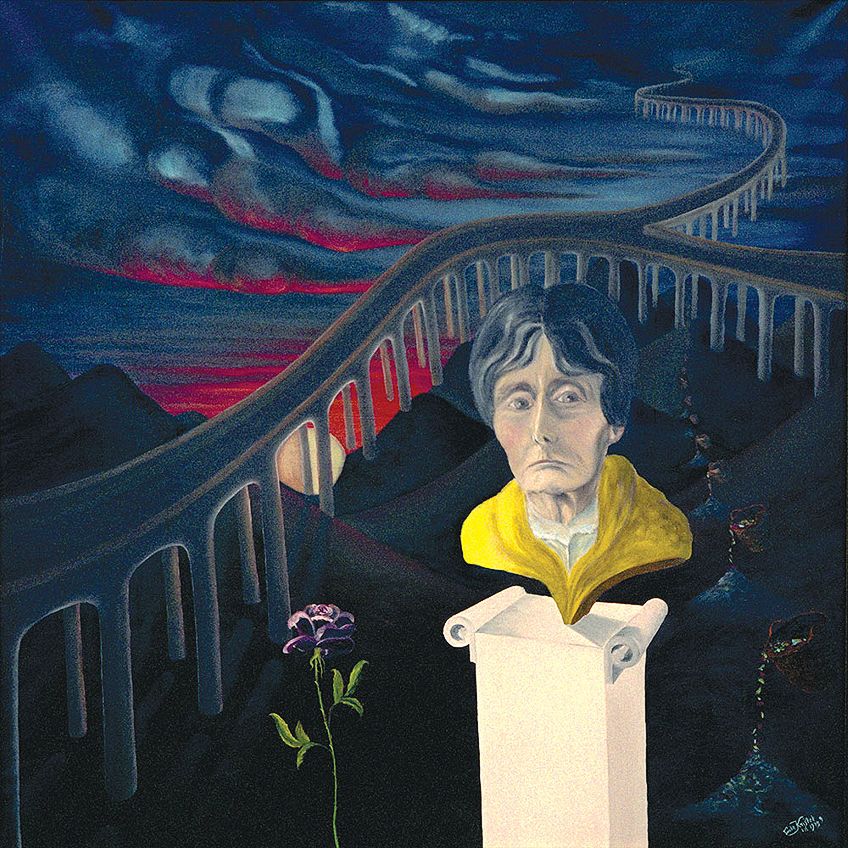
An early influence on the subsequent development of Postmodern art was the Dada movement, in which artists mocked the traditional art establishment with their anarchic behaviors and disrespectful performances. The introduction of the readymade into art shocked audiences as it forced viewers to question the authenticity and originality of art, which had a remarkable effect on the development of Postmodernism.
Postmodern art was considered to be an incredibly contentious movement, as it openly challenged already established ideas about art in an attempt to bring about a reformed awareness and understanding into the art-making process.
Thus, Postmodern art was multifaceted in that it was characterized by mixing theatrical and theoretical elements in unexpected ways, which displayed its drastic departure from the visions of Modernism.
Artworks created within the Postmodern period placed focus on breaking down the distinctions between what was considered to be high and low art. This was done by employing elements of popular culture in artworks to highlight the contrast between these two types of art, as well as to demonstrate how these elements could work together. Postmodern artists closely experimented with the idea of undermining originality, as they would use photographs and other pieces with little or no modification to the original.
Postmodernism art was seen as anti-authoritarian by nature, as the movement refused to acknowledge the authority of any style or definition surrounding what art should be made up of. Despite employing some characteristics of other movements, Postmodern art reacted against the ideas and values that governed these movements. In doing so, the movement was ultimately credited with refining the difference between high culture and popular culture within the works that were created.

Due to this, Postmodern art ushered in a new era of liberation from tradition, as it was based on the idea that anything goes within artistic creation. Thus, artworks were ironic, absurd, confrontational, or problematic, and often challenged the boundaries of what was considered suitable and in good taste. This reaction of how art can be produced took on several artistic forms as Postmodernism evolved, eventually developing into Conceptual art, Minimalism, Video art, Performance art, Identity Politics, and Institutional Critique.
In essence, the Postmodernism art movement was distinguished by its continual questioning of the narrative that openly embraced progress and the development of technology in a positive light. Through rejecting this acceptance, artists were able to embrace the transient nature of life and reflect that within their works, as opposed to focusing on the totalizing and unchanging theories that previously dominated art.
What Is Postmodernism?
The Postmodernism art movement was a difficult artistic period to define due to its lack of rules and its borrowing of elements from other movements. Within art, the term “postmodern” appeared around the 1970s, and was used to describe artistic movements that had emerged after the late 1950s in reaction to the perceived failings and overindulgence of the modernist period. However, within the contemporary sense, the term was not used until 1979 by philosopher Jean-François Lyotard in his writing, La Condition Postmoderne, “The Postmodern Condition”.
A Postmodernism Definition
To an extent, Postmodernism defied definition as no one style or theory was able to encompass the entire movement. Nevertheless, Postmodern art is generally said to describe any movements that arose from the rejection of Modernism, such as Conceptual art, Pop art, Neo-Expressionist art, Feminist art, and the art of the Young British Artists. Art created within these genres was typically avant-garde and revolutionary, as they reacted against previously formal elements that dictated artistic creation.
Postmodern art was said to be ground-breaking and progressive, as it rejected the idea of development in art. In order to reject these ideas, an important and defining characteristic within Postmodernism art was the mixing of high and low culture through the use of industrial supplies and pop culture images. Postmodern creations were noted for how they blurred the distinctions between what was considered fine art and what was generally thought to be kitsch.
Thus, the Postmodern art movement brought components of kitsch, commercialism, and a general camp aesthetic into the art context. It also borrowed elements from past artistic periods, such as the Renaissance, the Baroque, and Gothicism, but mixed them with newer styles which rendered their original use pointless.
In essence, this grand rejection of boundaries between high and low art, a lack of artistic direction, and the disrupting of genres with styles such as collage and fragmentation is what ultimately defined Postmodern Art.
Understanding the Term “Postmodernism”
Since the 1950s, the predominant art term used to describe art after the Modernism movement has been contemporary art, although not all contemporary art falls into the bracket of Postmodernism. However, it has been argued by defenders of the Modernism movement that Postmodernism can also be used to denote a certain phase of Modernism within art. Additionally, the term “Postmodernism” has been said to encompass all art that emerged from Modern art, as the newer movement was viewed as a version of its prior influence.
This shift from Modernism to Postmodern art is said to be dated around 1914 in Europe, and between 1962 and 1968 in America. As with all new artistic terms, criticism existed surrounding its application. Art historian Kirk Varnedoe suggested that no such thing as Postmodernism could exist, as the possibilities within Modernism had not yet been fully explored. Based on this, the theoretical foundations of the term Postmodernism as an iconic branch of art are still very much contested.
The complexity surrounding Postmodernism made the movement incredibly influential throughout the 1980s.
As the world economy expanded, Postmodern art became the favored artistic style to comment on aspects of consumerism and corporate culture. Unfortunately, this would prove to be the downfall of the movement, as the Postmodernism movement eventually collapsed under its own success. However, it provided the art community with a new way of observing the world, which is still relevant today.
Characteristics and Influences of Postmodern Art
As an art movement, Postmodernism could not be described as coherent due to the lack of noticeable characteristics within the artworks that were produced. Despite this, Postmodern art was rather characterized by a set of styles and attitudes that were present within the pieces, as the common theme surrounding a rejection of Modernism was apparent. The main characteristic that was used to identify art as Postmodern was the distinct break down between fine art and popular culture within works.
This was done through employing styles such as collage, assemblage, montage, bricolage, text as a central element, appropriation, and simplification in art pieces. Performance art became a popular medium to work with, as well as the recycling of past styles and themes into a more modern context. The use of these diverse sources allowed experimentation with originality, performance, boundaries, aesthetic codes, and audience participation, which went on to challenge previous definitions of what art was.
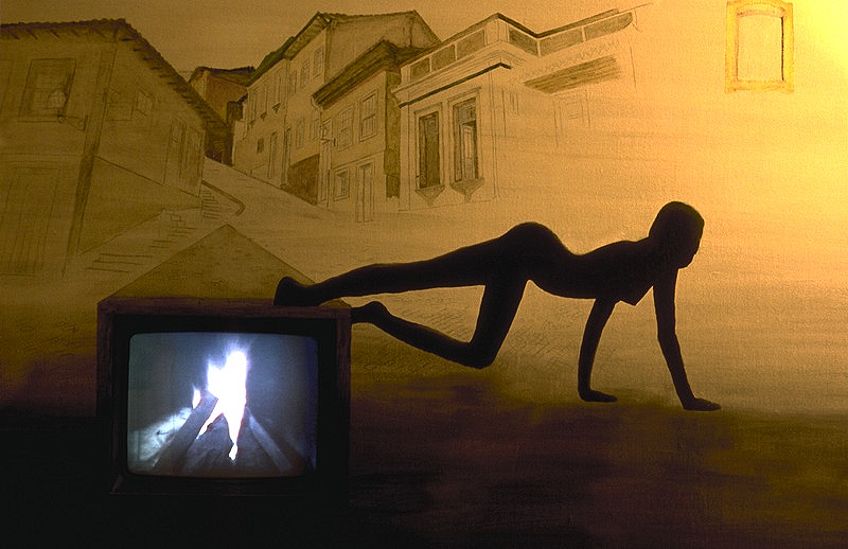
Precursors of Postmodernism
Movements and trends that were seen as significant precursors to the development of Postmodernism arose around the First World War, specifically in its aftermath. The introduction of industrial elements into art, as well as techniques like collage, caused movements like Cubism, Dada, and Surrealism to challenge the character and merit that was supposedly present within art. Therefore, the new art forms that developed influenced these movements by introducing more modern ways of creating art.
Initially beginning as Modernist movements, Pop art and Minimalism underwent a fundamental change in their approach to art in the early 1970s, and were considered to be early precursors to Postmodern Art. However, an influential forerunner to the Postmodern movement was the Dadaism period and the works created by Marcel Duchamp.
Some critics labeled Duchamp and his obsession with paradox to be essentially Postmodern, as the works he created avoided any specific medium and inherent meaning.
When considering the chronological development of Dadaism, the movement was located solidly within Modernism. Despite this, the chaotic art period was said to signify the shift that occurred between Modernism and Postmodernism, as it anticipated a movement that renounced the aesthetic in favor of art that was not traditional in nature. Duchamp’s move in 1914 from a Modernist practice to a Postmodern one demonstrated the understanding that progression within art was a lie, which was an essential notion within Postmodernism art.
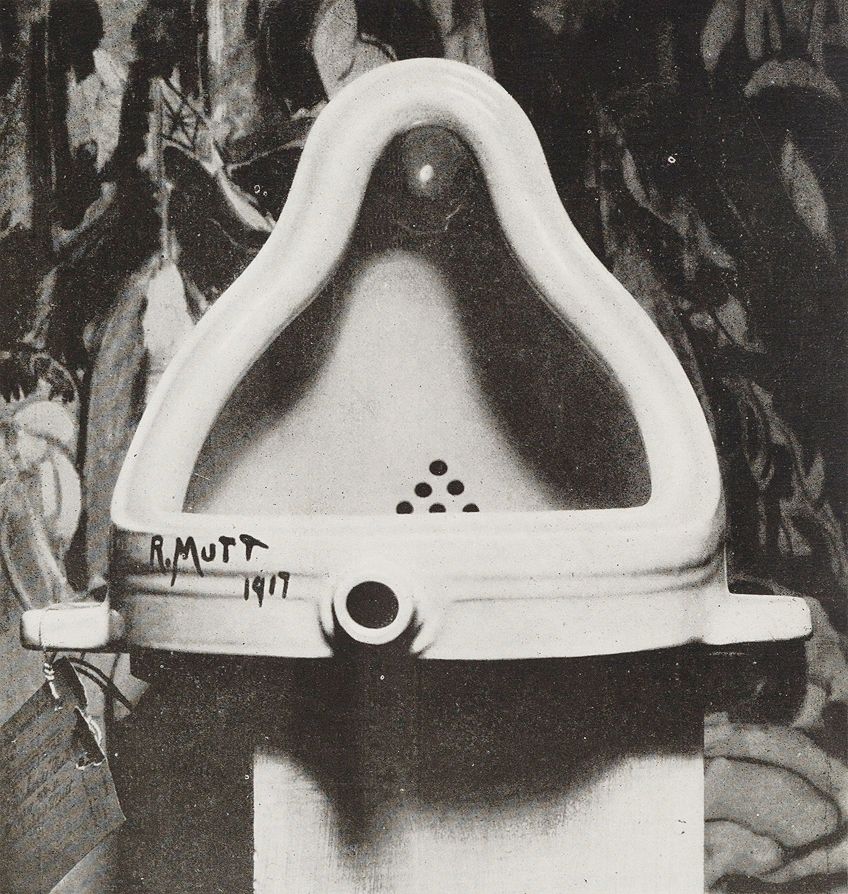
Modernism versus Postmodernism
The Postmodern movement was seen as a reaction against Modernism, as it held completely contradicting viewpoints. Modernism was typically based on a utopian and romanticized view of society and human life, as well as the belief that progress automatically related to increased benefits. Until the middle of the 20th century, art, literature, philosophy, and science were defined by the technological developments caused by the industrial revolution and the overwhelming positivity that was associated with modern life.
It was assumed that science could formulate universal truths that would simply explain reality, with artists then experimenting with more technical elements that subscribed to a scientific outlook within Modernism. More focus was placed on the form, technique, and process of making art in order to create a true reflection of the modern work, with the importance of the subjects being forgotten.
This led to a reaction against the supposed idealism that existed within society, which led to the formation of the Postmodern movement. Thus, Postmodernism evolved out of the feelings of incredulity and distrust that were starting to develop in society, as the movement challenged the existence of these universal certainties that were previously claimed. Postmodern artists began to refer to the mid to late 20th century philosophies that existed, as they believed that the individual experience was more important to express in artworks.
Modernism Transition into Postmodernism
The transition between these two artistic periods was marked by the significant change that was experienced by the Western world in the middle of the 20th century. At this shifting point, two devastating wars had taken place, millions of people had lost their lives, communist ideals were destroyed, and nuclear weapons had been put to use. Thus, the Modernist hopefulness that had dominated the pre-war art sphere no longer seemed appropriate, as its beliefs were viewed as pointless, obsolete, and destined for failure.
Additionally, Europe was no longer viewed as the center of the avant-garde or Modern Art, as the focus surrounding art had shifted to New York, where the Abstract Movement was beginning to develop. Artists working within this movement flourished in this new post-war era of art, as their interests were revitalized with new meaning despite them still being identified as Modernists through the characteristics used within their artworks.
Once Abstract Expressionism became an established movement within America, artists began to challenge it for its failure to provide adequate reference to both the condition of the world and the thriving popular culture. Encouraged by this passion to create art that recognized daily life, artists began to test out new styles that borrowed and reconstructed imagery from the mass culture around them.
Thus, the Neo-Dada style was born, which signified the transition between modernism and post-modernism, and was perhaps the first genuine Postmodern art movement to exist.
High and Low Art
A distinction existed between what was perceived to be high and low art, as the Modernism and Postmodernism movements made use of each style respectively. High art was a term used to identify fine art that was traditional in terms of the medium, technique, and style that was used, such as paintings and sculpture. This title was used to describe all art that supposedly held a class status, as it separated itself from art that was deemed tasteless and therefore unworthy of attention.
In response to this, Postmodernism adopted characteristics of low art within their work, such as the use of pop culture, mass-produced goods, and elements from magazines and television. Postmodern artists embraced the “popular” within society and eagerly added this feature to their works, leaving their artworks to come across as kitsch to art critics. Instead of creating art that was seen as traditional, Postmodernism artists experimented with mundane objects humorously and ironically by transforming them into gigantic sculptures and cultural icons.
The attention placed on low culture within art expanded the definition of what art encompassed and could be, which provided an important social critique at the time. Through embracing the popular culture at the time, the Postmodern movement was able to create art that deviated from traditional norms in such a way as to allow a new artistic medium to develop.
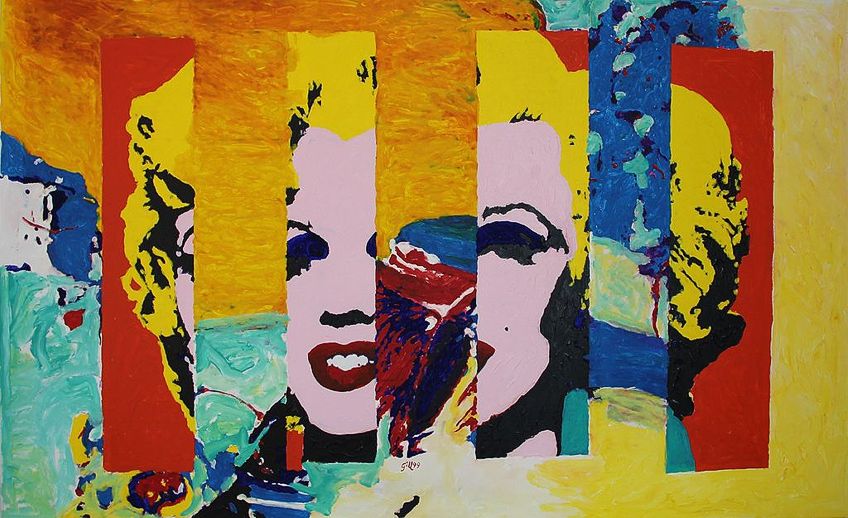
Image and Spectacle
Within this new period of consumerism and television that had developed in America, advertising and popular culture became more and more widespread in everyday life. In 1968, the first uncensored footage of war was viewed by the American public in their homes, as scenes of the Vietnam War were displayed on the television. This documented the start of a disconnect that was developing between image and spectacle, as society seemed perfectly comfortable witnessing such atrocities of war in their home.
The images that were shown were indicative of the new reality that existed, as it became harder for society to differentiate between fact and fiction. Additionally, the widespread use of advertising added to the difficulty that had formed in making the distinction between the two.
This situation was termed “hyperreality”, as the Postmodernism that had developed was compared to a flashing television screen, as it seemed to be constantly shifting and heavily fragmented with no fundamental truth.
This new contrast between image and spectacle inspired artists to begin creating works that focused on the surface rather than any deeper meaning, as spectacle was given precedence over substance. This focus on surface existed as a key component in the works of artists within the Postmodern period, specifically in the artworks created by Barbara Kruger.
The Blending of Aesthetic Codes
The Modernism movement first emerged in France in the 19th century as a rejection of the historical and symbolic portrayals of the French Academy and their authority over what was considered to be artistic. Thus, the experimental movements that occurred in the early 20th century moved away from any reference to a subject within artworks, as a pure and more direct form of visual artistic expression was sought after and created.
This trend of nonrepresentational painting reached a peak with the development of Abstract Expressionism, after which painting as an artistic medium was seen as overused, with hardly any space left to experiment. When the Postmodern movement emerged after this, artists began to explore past styles and media in an attempt to bring back a historical and subjective aesthetic. However, this reinvigoration of previous artistic styles was reworked in such a way that they contained an intentional lack of integrity and harmony within the works created.

Artistic codes and genres were mixed to display old and new meanings that were blended together in unique and daring ways. In copying the style of the Dadaists, the Postmodern artists used techniques such as collage, bricolage, assemblage, and juxtaposed text and images when creating works out of found objects to create layered surfaces.
Based on the concept of “anything goes”, many artists began exploring multimedia technology through an artistic crossover during the 1960s and 1970s, as they were able to create spectacles through combining different types of media. This style of blending found its way into filmmaking, with Quentin Tarantino’s Pulp Fiction (1994) existing as a good example of this. The movie is said to challenge the conventional narrative through the disconnected montage of the characters and the random order of the plots.
Originality and Authenticity
Within traditional art that had previously dominated the artistic sphere, the individuality and originality of an artwork were the key elements that gave it its value, both financially and symbolically. This was a concept that was preserved throughout the Modernist era within art, as the uniqueness of an artwork was what deemed it important enough to be considered as art worth viewing.
However, this concept was overthrown in 1917, when Marcel Duchamp exhibited a signed urinal and labeled it as art.
Duchamp’s artwork ridiculed the entire groundwork on which the establishment of art had been constructed, which gave way for artists to begin experimenting with the concept of what informed art. In 1936, Walter Benjamin wrote his influential essay, titled The Work of Art in the Age of Mechanical Reproduction, in which he stated that the mass reproduction of art could ensure its wider accessibility to society. Additionally, through using methods such as printing, the artworks created had a lower commodity value.
Benjamin’s thoughts were later adopted by artists within the Pop, Minimalist, Performance, and Conceptual spheres, which led to artists experimenting with a variety of techniques that worked to diminish the idea of authenticity and value in the works created. This was seen in the artworks belonging to Roy Lichtenstein and Andy Warhol, who challenged the concepts of originality and authenticity in their appropriated works through mass-produced items that were printed with well-known imagery.
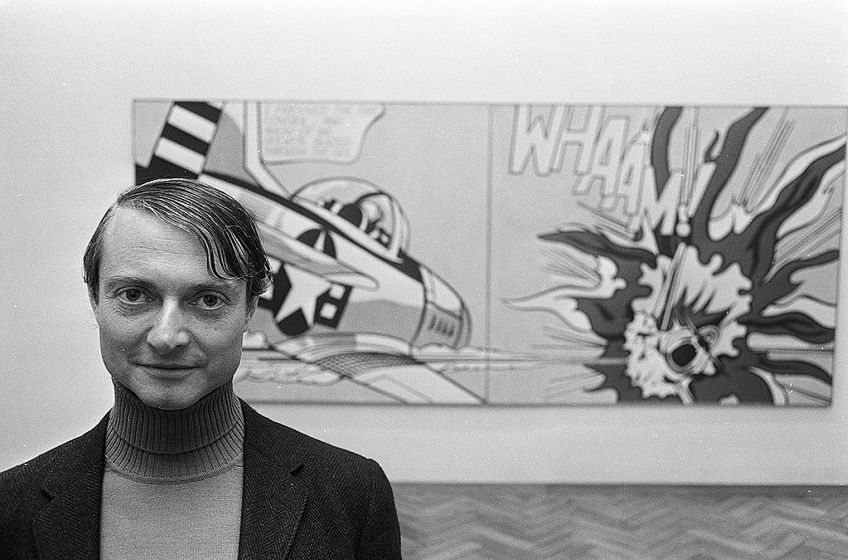
Pluralism
Postmodern artists searched for democracy within art, through the reproduction, experimentation, and appropriation of their artworks. Previously, in the Modernist era, the art world was viewed as elitist because it was predominantly controlled by white Western males who created art that was seen as worthy of viewing. Postmodernists sought to break away from this ideal, with this timing coinciding with the rise of feminism, the civil rights movement, and the battle for LGBTQ+ rights.
Artworks created in the Postmodern era displayed a want for a more pluralist approach, which led to artists approaching subjects from a variety of new perspectives so as to include viewpoints of previously unrepresented positions.
The result of this increase in pluralism was that artworks began to demonstrate a greater representation of varied multicultural identities, in addition to experimenting with the idea of identity and self.
Famous Postmodern Artists and Their Artworks
Throughout the history of Postmodernism art, many artworks were created using a variety of characteristics borrowed from previous art movements. Performance pieces, sculpture, and photography were more popular mediums within this movement; however, some Postmodernism painting did exist. Within this article, some of the movement’s more active Postmodern artists are spoken about, along with their significant artworks which helped to develop the era of Postmodernism
Andy Warhol (1928 – 1987)
Pop artist Andy Warhol created some iconic artworks that were defined as part of the Postmodernism era of art. Out of his works, his 1962 silkscreen Marilyn Diptych exists as a notable work within the Postmodern movement, as Warhol experimented with an aesthetic style that was typically found within the advertising industry at the time.
This diptych, which describes two pieces of art that are combined to create one whole artwork, depicted a picture of Marilyn Monroe in the film Niagara, which Warhol first reproducing a left panel in color and then a right panel in black and white. Made in the months following Monroe’s death, Warhol displayed his fascination with death and celebrities, with this artwork combining these interests. Additionally, the stark color contrast against the two panels was suggestive of the dissimilarity of life and death.

Warhol challenged the traditional form of representing subjects upheld in the Modern art movement through repeating the same image of Monroe. This repetition was also viewed as a mocking commentary on the growing mass production that had begun within art, as well as the authenticity that was believed to exist in all artworks. Warhol often questioned the tradition of high art in his works, with the creation of Marilyn Diptych existing as a lighthearted answer to his question.
This can be seen as a Postmodernism artwork due to its obvious reference to pop culture, which was typically associated with low art, its rebellion against prior Modernist aesthetic ideals, and the use of repetition which stood for mass production. Additionally, Warhol was successful in disrupting the authenticity in his artwork as he made use of a found image, repeated it, and labeled it as art. This work challenged traditional boundaries between high and low art in America, as it existed as a statement for consumerism and spectacle.
Carolee Schneemann (1939 – 2019)
An iconic Postmodern performance piece was created by Carolee Schneemann, who focused on the body as explicitly sexual within her works. Her refusal to separate sexual experience from art making was deliberate, as she planned to return to the body as a sight of knowledge and experience so as to unite its inner energies with the visual information it provided. Schneemann’s most iconic performance art piece was titled Interior Scroll and was performed in 1975.
Many artists between the 1950s and 1960s challenged the relationship between an artwork and the audience, as performances as a new art form were very new to the artistic world. Schneemann was radical in her approach to performance art and in her seminal piece, she undressed in front of an audience. What made her work so shocking was that she slowly pulled out a strip of paper from her vagina after undressing, and began to read the text that was written on it.
What made Schneemann’s performance an iconic piece of Postmodern history was that it was said to be directed against the traditional ideas that dictated the classical art and high culture, which still existed due to the Modernist movement. Additionally, her performance existed as a feminist piece of art, as it introduced the female body as a source of creative energy and challenged its representation in society.
Barbara Kruger (1945 – Present)
Another prominent female artist within the Postmodernism era was Barbara Kruger, whose works existed as iconic pieces of the movement. Kruger made use of advertising to design her artworks, with a few of her more well-known pieces being mass-produced on shopping bags and other products like T-shirts. A popular notion that appeared in some of her works was the theme of consumerism, which was the main feature in her iconic 1987 work, Untitled (I shop therefore I am).
This artwork was characteristic of Kruger’s style, as a juxtaposition was created through the combination of a found photography and an assertive or provocative slogan. An appropriation between high art and mass-media advertising was created within Kruger’s work, as this piece takes on the form of an advert as opposed to a formal work of art. The color scheme of red, black, and white helped place the writing at the forefront of the work, which acted as the focal point for viewers to consider first.
The quote “I shop therefore I am” subverted René Descartes’ philosophical statement of “I think therefore I am”, which referred to consumerism that was said to be shaping identities within society. Through this work, Kruger stated that a person’s value and identity ran no deeper than the surface, implying that the material possessions they owned dictated who they were. Additionally, the red frame surrounding the work created a confined space, which was said to emphasize the text against the blurred background.

Marina Abramović (1946 – Present)
Existing as the artist of a significant performance piece was artist Marina Abramović, whose works were well-known within the Postmodern period. Her most iconic piece, performed in 1974, was titled Rhythm 0/Seven Easy Pieces. In her work, Abramović placed herself in a gallery and invited audience members to do what they wanted to her without her eliciting any response.
Abramović set out 72 different objects that viewers could choose from to use on her, with these items consisting of knives and a loaded gun. With the items ranging from pain to pleasure, viewers were first hesitant to take part in her performance. However, after Abramović’s six-hour performance, her interactions with viewers became increasingly aggressive, which led to vicious and disturbing outcomes.
This performance was seen as groundbreaking at the time, as it aided in the Postmodern shift that leaned towards including audience participation as part of an artwork. Abramović demonstrated a total surrendering of control and authorship within her artwork by allowing audience members to dictate its outcome, which challenged the Modernist’s idea that art had to be unique and created by one famous artistic figure.
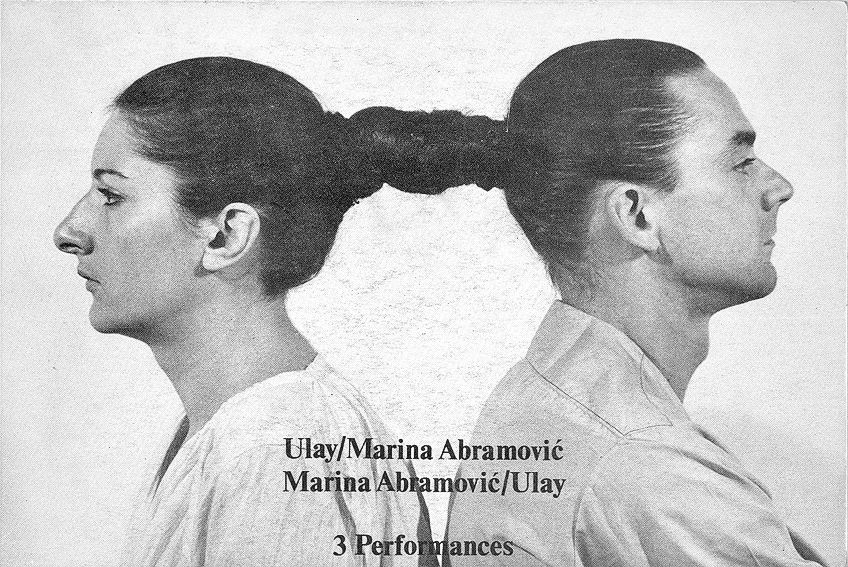
Cindy Sherman (1954 – Present)
An artist who experimented with the playful treatment of identity and self was Cindy Sherman, who incorporated this element of pluralism within all of her Postmodernism photography. Sherman’s works placed particular focus on the split that existed between an identity that was created through film or another type of media and the reality of women’s experiences in society.
Within her works, Sherman drew attention to the method of production and emphasized that an artwork could be interpreted in a variety of ways.
In doing this, Sherman demonstrated that art could resist superior narratives. Within her Untitled Film Stills series, her 1978 work titled Untitled Film Still #21 exists as a well-known black and white photograph, as she depicts a female film heroine in a costume and a hat. A young woman from the 1950s is depicted and framed by the skyscrapers around her, with the era of the photograph being recognized by the dress she is wearing. The expression on her face is vague, as she seems both determined and uneasy at the same time.
The images within Sherman’s Postmodernism photography series experimented with the idea of a shattered postmodern identity, as she took on the role of both the photographer and the subject in her work. In each photograph in her Untitled Film Stills series, Sherman posed as an actress in a variety of settings from different eras, which spoke to the notion of time and genres that audience members could identify with.
Thus, Sherman’s photographs were Postmodern due to their lack of authenticity and the representation of identity as a fluid and interchanging concept. Through the borrowing of historic styles, Sherman was able to position herself both inside and outside the realm of media, which provided a strong critique about the idea of fixed feminism and the representation of women in society.
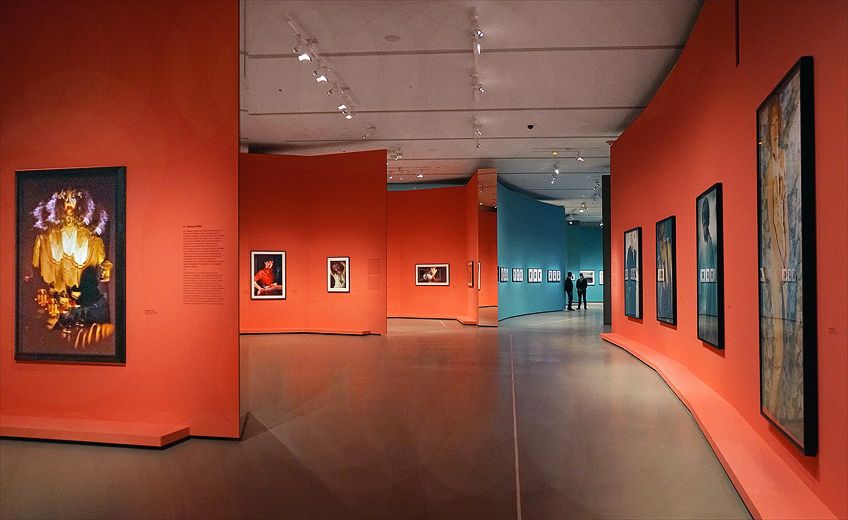
Jeff Koons (1955 – Present)
Another artist who created works that played off the kitsch potential of Postmodernism art was Jeff Koons. His most iconic art series, known as Banality, displayed this tacky aspect that existed in most of his works, as it demonstrated the contrast of the garish and sentimental within his pieces. His most significant Postmodernism sculpture was placed within this series and was titled Michael Jackson and Bubbles (1988).
Within this artwork, Koons created a life-size sculpture of Michael Jackson and his pet monkey, Bubbles, sitting on a bed of flowers. The sculpture demonstrated the height of Jackson’s fame at the time, with Koons painting it in gold to emphasize his popularity. In doing so, he also converted Jackson into a god-like icon through this color, which displayed the rejection of traditional religious imagery that was still present in the Modernist era.
Additionally, the white coloring of the faces referred to the Byzantine, Baroque, and Rococo periods of art, with Koons bringing back past styles in a theatrical and gaudy way which was typical of artworks within the period of Postmodern Art. This sculpture exists as a good example of the excess that was present within the artworks created by Koons, and also challenged the traditional notions of taste, high art, and pop culture.
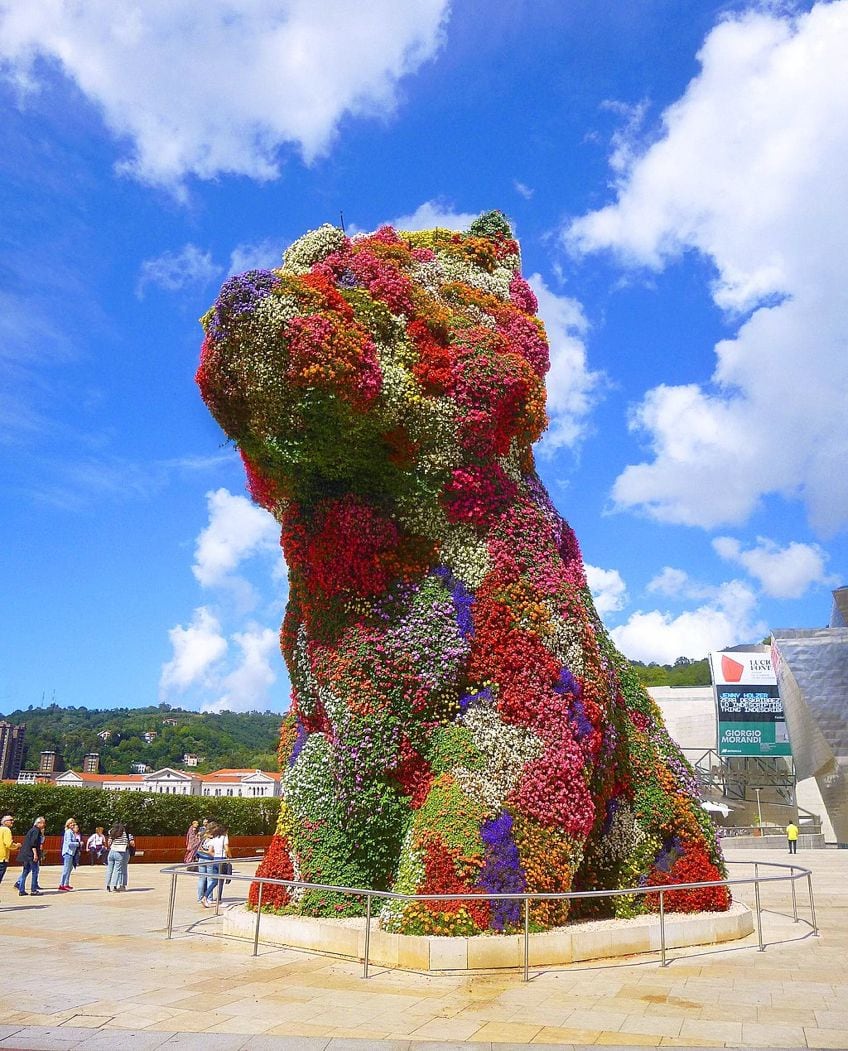
Damien Hirst (1965 – Present)
Known for creating astonishing Postmodernism sculpture pieces was Damien Hirst, the leading artist of the Young British Artists movement, who were known for their provocative and shocking artworks. Of all the works he created, his most famous piece and an equally well-known artwork was his 1991 sculpture titled The Physical Impossibility of Death in the Mind of Someone Living.
This art piece, also known as The Shark, is possibly one of the most famous works of the Young British Artists movement in the 1990s, and is made up of a tiger shark that was preserved in formaldehyde. In this work, Hirst confronts viewers with their own death by presenting a once-feared beast, which forces viewers to further acknowledge their fears about dying in a public space as opposed to a private one.
Since most viewers would have only seen an animal of this size and force in a book or through the television, being physically confronted with the actual shark made it difficult for viewers to see it as “real” and not a replica. Through placing the shark in the gallery, Hirst played on the idea that the animal had lost its power and was, therefore, no harm to viewers because it was dead. This exists as an important Postmodern work through the spectacle that was created when looking at it, as well as the fact that the immense animal was viewed as a mere commodity because it was no longer alive.
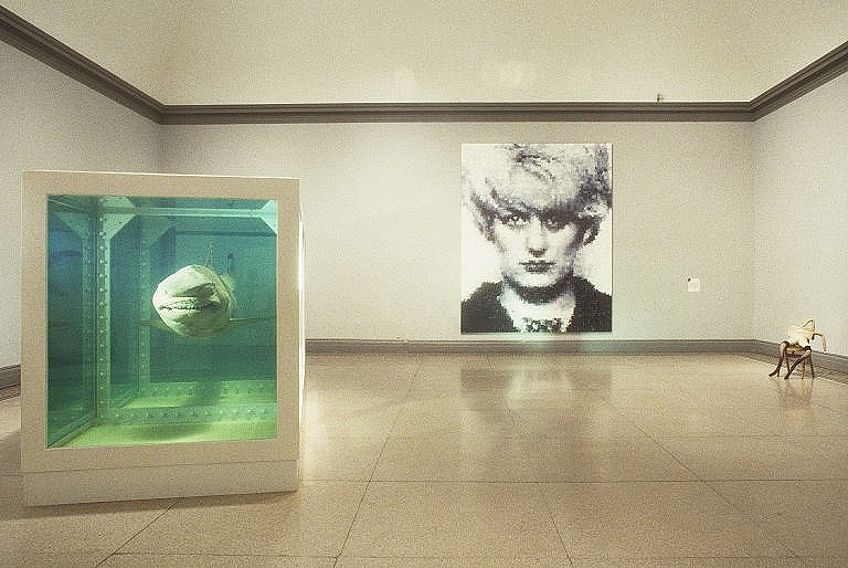
The Legacy of Postmodern Art
As the Postmodern movement incorporated styles and techniques belonging to other art movements, it is easy to still wonder: What is Postmodernism? The best way to describe the movement is through the phrase “anything goes”, as this era of art collapsed the distinction that existed between high and low art, allowing for a combination of the two. The legacy of Postmodernism art continued after the movement’s demise, as its questioning of assigning value and judgement to artworks was taken further in the movements that followed.
While Postmodernism was thought to disrupt the Modernist art movement that appeared before, it has also been said that it enabled the continuation of Modernism, as there is evidence of both styles appearing in Contemporary art today. The attitudes and styles within Postmodern art were viewed as important shifts that initiated great change within artistic society, with the collaboration existing in Contemporary art said to belong to Postmodern influences.
Postmodern art sealed the gap that existed between high and low culture, as well as good and bad taste within art, yet some critics argue that these distinctions are still visible. It has been said that the art community has shifted into a post Postmodern era, as some characteristics of Postmodernism have been viewed as outdated. However, these claims have generally been dismissed, as some Contemporary artworks existing today borrow elements from both the Postmodern and Modern movements, simply combining different aspects.
Postmodernism art has been an elusive movement, as many variations existed throughout the period’s peak. Artworks that deviated from the norm and contradicted the ideals of the Modernism movement were inherently Postmodern, as this era of art was marked by artists who challenged the distinctions of high and low art in their experimental creations. Postmodernism was said to lead the way to the development of the Contemporary art movement, which exists as the dominant art style today.
Take a look at our Postmodernism art webstory here!
Summary of the Postmodern Art Movement
What Is Postmodernism?
The Postmodernism art movement described artworks that displayed a break away from the traditional elements of high art, as artists began to embrace the influences of the mass media, popular culture, and technological expansion.
What Is a Suitable Postmodernism Definition?
Despite this movement being quite difficult to define, an appropriate definition for the Postmodernism period would be any artworks that appeared after the Modernism art movement. Additionally, any artists that demonstrated the influence of pop culture and societal change within their works could be classified in this movement.
What Is Modernism versus Postmodernism?
The Modernism movement occurred before the Postmodern movement and was associated
with a utopian and idealized view of society, as well as a belief in progress. Postmodernism,
on the other hand, began to explore human experience as opposed to realism within their
works, as artists made use of a variety of new influences.
What Types of Art Were Created in the Postmodernism Era?
The popular mediums within this artistic era were Postmodernism sculpture, Postmodernism photography, and Postmodernism painting.
Who Were Some Well-Known Postmodern Artists?
Some of the well-known artists working in the Postmodern movement were Cindy Sherman, Barbara Kruger, Andy Warhol, Carolee Schneemann, Jeff Koons, Marina Abramović, and Damien Hirst, to name a few.
Isabella studied at the University of Cape Town in South Africa and graduated with a Bachelor of Arts majoring in English Literature & Language and Psychology. Throughout her undergraduate years, she took Art History as an additional subject and absolutely loved it. Building on from her art history knowledge that began in high school, art has always been a particular area of fascination for her. From learning about artworks previously unknown to her, or sharpening her existing understanding of specific works, the ability to continue learning within this interesting sphere excites her greatly.
Her focal points of interest in art history encompass profiling specific artists and art movements, as it is these areas where she is able to really dig deep into the rich narrative of the art world. Additionally, she particularly enjoys exploring the different artistic styles of the 20th century, as well as the important impact that female artists have had on the development of art history.
Learn more about Isabella Meyer and the Art in Context Team.
Cite this Article
Isabella, Meyer, “Postmodern Art – An In-Depth Exploration of the Postmodernism Period.” Art in Context. April 19, 2021. URL: https://artincontext.org/postmodern-art/
Meyer, I. (2021, 19 April). Postmodern Art – An In-Depth Exploration of the Postmodernism Period. Art in Context. https://artincontext.org/postmodern-art/
Meyer, Isabella. “Postmodern Art – An In-Depth Exploration of the Postmodernism Period.” Art in Context, April 19, 2021. https://artincontext.org/postmodern-art/.



